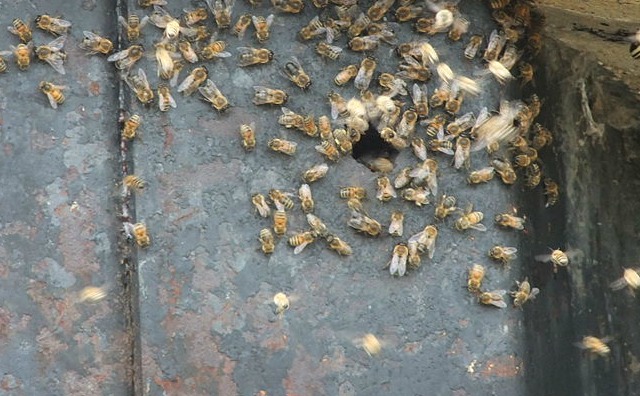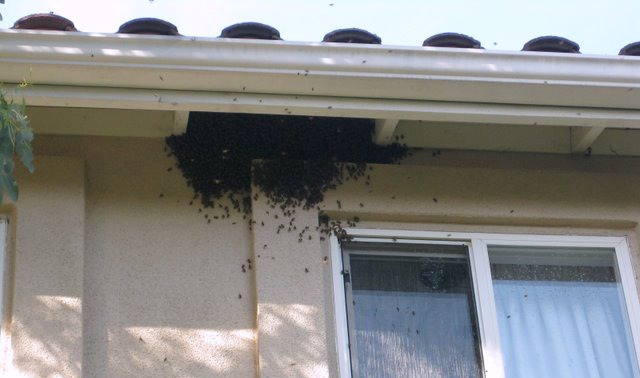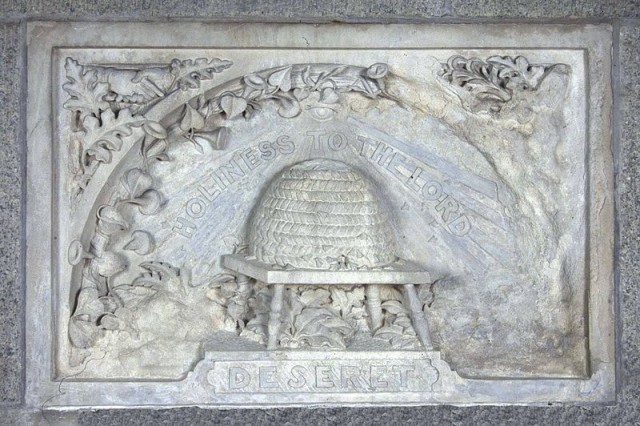So, this time, I realized that I couldn’t let them into my attic. We had to discourage them from moving in. Enter the garden hose. Spraying them away from the opening in the roofline proved entertaining to the neighbors I’m sure, but only made matters worse. They came back quickly and settled in a swarm on the opening.
Back to my reading and it says that they are not aggressive at this stage, and will usually move on after a scouter bee finds a new location.
“Stay back and keep others away from the swarm, but feel free to admire and appreciate the bees from a safe distance.” horticulture news
Honey bees are interesting. It’s sort of a matriarchy, a queen bee, thousands of worker bees (all females) and a few drones(male bees). Poor drones, they mate with the queen and die immediately. Those that don’t mate are eventually pushed out because they cannot feed themselves and have no pollen baskets or wax glands and cannot secrete royal jelly.
We watched them for awhile, and then went back in the house. About 30 mins later the party had broken up — but not gone from my house. The scouter bees must have already found a warm inviting home inside our attic, as they all moved in. We had to resort to our back-up plan and use the pesticide room bomb in the attic.
I wish we could have kept them out on some field. Honey bees are a symbol of production, cooperation and a good omen. They just chose the wrong place to hive.
Hugh Nibley talks about bees when discussing the Jaredites in The Book of Mormon, how they brought the honey bee which they called “deseret” with them from Mesopotamia to the Americas. “And they did also carry with them deseret, which, by interpretation, is a honey bee.” (Ether 2:3) Now, I know that sounds crazy, traveling with hives of bees in some sort of ship across the ocean.
“We mentioned the fact that deseret is the mystic, secret name given to the honey bee by the Egyptians, too. The Egyptians were moving in the same direction. They moved with the honey bee…Remember, it was the descendant of Noah, Egyptus, who led her people into Egypt. They settled there in the opposite direction at this time, and deseret was their beacon, their sign.
You can see the family about ready to depart; they’ve packed all the baggage and everything for all these people. Somebody is running around among the wagons saying, “What happened to little deseret?” Deseret always gets lost when they’re going to go. It means “hives of bees,” and they do take hives of bees with them. It’s a very interesting thing. You remember there were no bees in the New World. There were no bees in Mesopotamia until quite late. Bees were first found in Palestine and Egypt. They’re not spread around universally, as you might think. In the Chilam Balam you’ll find them in the New World when they were brought here. It’s very interesting, the distribution of bees. There’s been a good deal written about that.” (Nibley, The Teachings of the Book of Mormon, vol 4, p 253)



